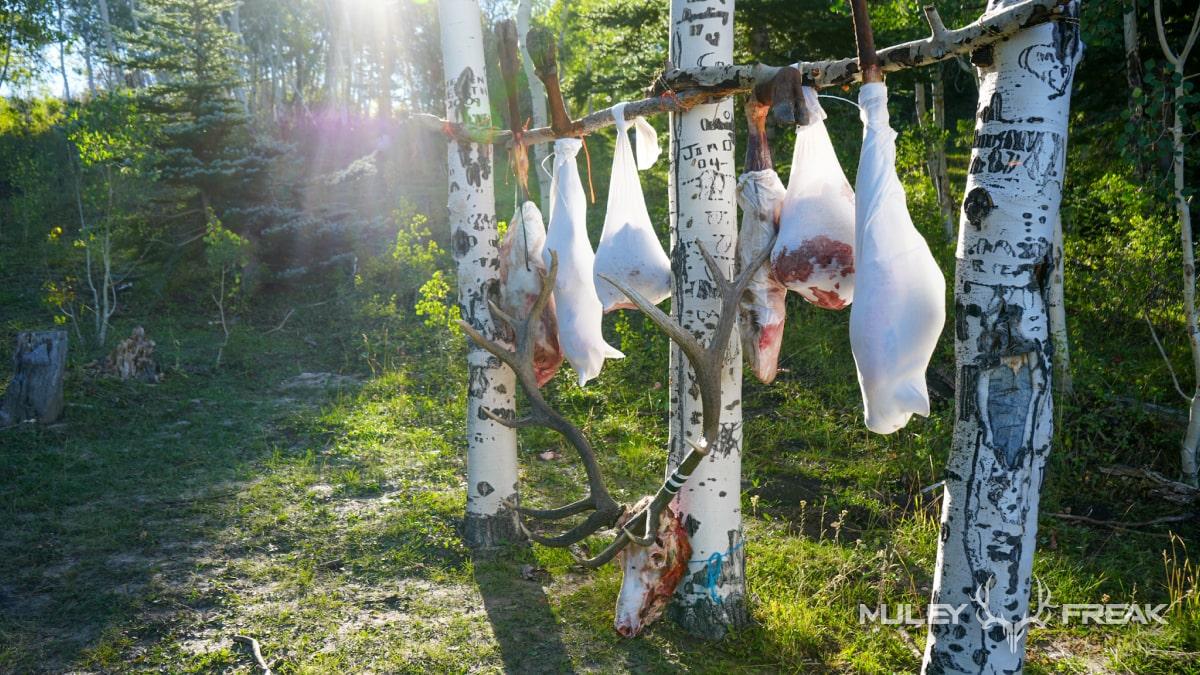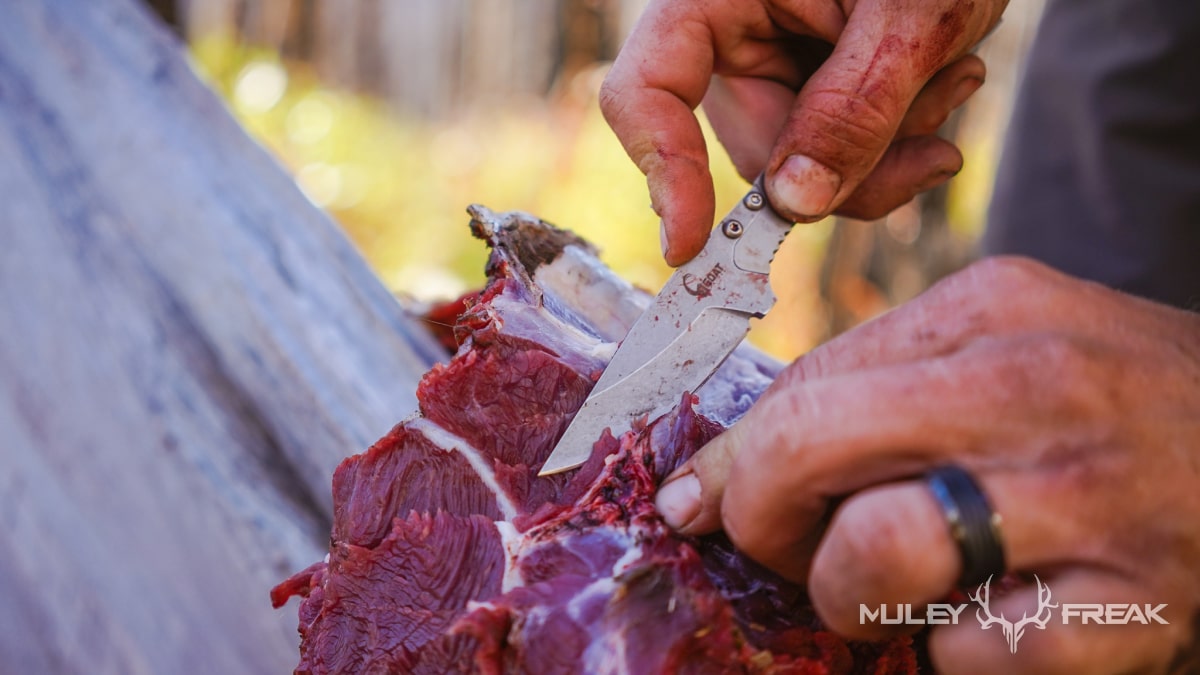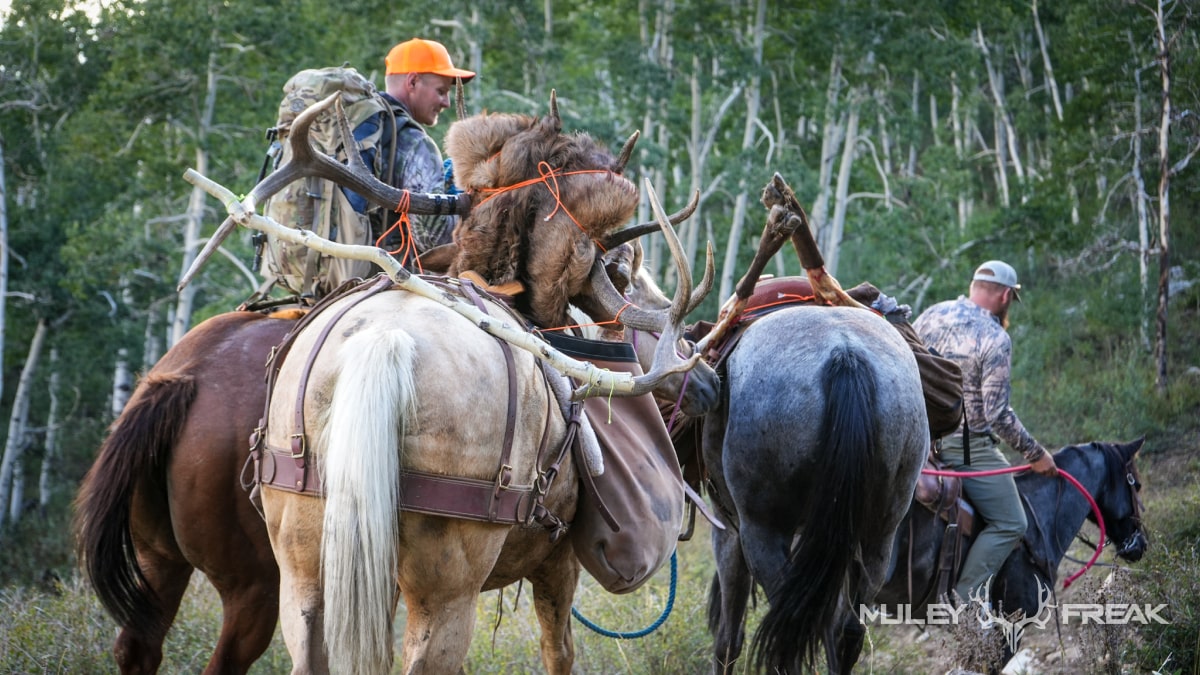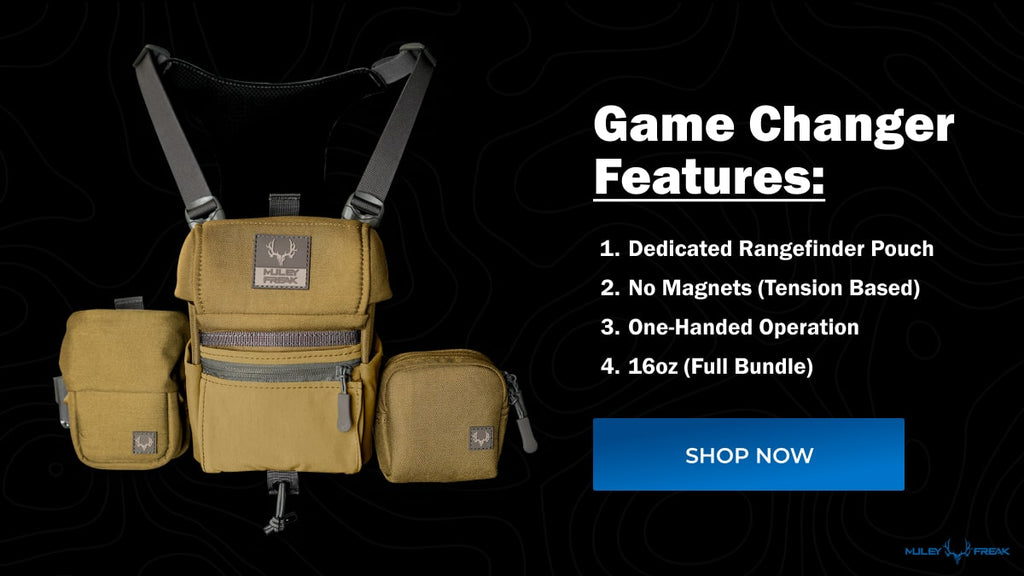Photos by Aaron Van Woerkom

Self sufficiency
During the COVID pandemic, the self-sufficiency hunters have long told everyone about really shined. Being able to get meat became a worldwide crisis for non-hunters. Prices skyrocketed because of less meat production and panic buying. Then processing facilities shut down and later decreases in the labor force. The pandemic revealed to the world the meat industry is broken…like really broken. Turns out hunters were right all along, the supply chain of field to plate never breaks down.
Should I Use the Bone-In or Bone-Out Method?

Considering this, getting an animal from the field to your plate takes some work, a little skill, and some forethought. With an animal as big as an elk, field butchering can seem nearly impossible as you stand over it (a single elk hind quarter can weigh on average from 65-80 lbs). It isn’t though - just take it one step at a time and you’ll have it broken down before you know it.
Hunters break an elk down one of two ways, 1) bone-in or 2) bone-out. This is also called quartering or de-boning. Hunters often argue which way is better, boning out or leaving the bones in. It’s a great topic to debate, with both positive and negative points on both sides. Next time you argue the topic at camp, use these talking points to sound like a field butchering mastermind. Also, use these pros and cons as you decide what will work best next time you’re standing over an elk with a knife in hand.
The bone-in butchering method
Bone-in, or quartering, is skinning and cutting the legs off at the hip or shoulder and leaving all the meat intact, still attached to the bone.

Pros:
- Less time in the field butchering
- Sits nicely in a pack because the bones act as a frame for the meat to carry instead of a blob of loose meat in a sack
- Allows you to butcher at home in a comfortable and clean setting
- Bones can be used for bone broth or cut up for dog treats
- Easier to hang for cooling
- Easier to hang for dry aging
- Allows meat to naturally go through rigor mortis and stretching process which some argue makes a more tender final product
- If taking to a professional butcher, many butchers prefer having the bone-in and can produce a higher quality cut than hunters in the field
- Hung meat will form a “crust” protecting the meat from contamination
Cons:
- It can take more trips to pack out all the meat
- Overall more poundage (20-30lbs) to haul on your back
- Once packed out, more work to break quarters down at home or camp
- If it is hot, hard to fit in a cooler for quick cooling
- Bones can hold heat and increase the chance of meat spoiling from the inside, especially in hot weather
The bone-out butchering method
Bone-out, or de-boning, is taking the bone-in method one step further while field butchering. Once you have the elk broken down into quarter pieces, you individually remove the muscle groups, bag them up, and leave the bones in the field.

Pros:
- Decreases the poundage needed to pack out (a leg bone can weigh 8 lbs, if you times that by 4 that's 32 lbs you are saving by not packing out the bone).
- If you are hunting with a buddy or two, you might be able to pack meat out in one trip
- Decreases home butchering time
- Easily fits in a large cooler for quick cooling if it is hot
- You can use fewer and smaller game bags for transporting in the field
Cons:
- Adds time to the field butchering process
- Possibility of dirtier meat because cut meat has more surface area to catch dirt, hair, or other contaminants and because you have to handle meat more
- If taking to a professional butcher, they may prefer meat on the bone to produce higher quality cuts than what can be done in the field by a hunter
- Harder to get the meat to ride nicely in a pack because it wants to sink to the bottom
- Possibility of tougher meat because harder to hang and dry age and natural rigor mortis can’t take place
All Things Considered

Additionally, several other external factors come into play when considering what method works best on your hunt. You have the weather, the number of people hunting with you, distance from camp or vehicle, access to pack animals, time of day killed, and ability to transport home, among other things. Once the animal is down, the clock starts ticking. Make sure you’ve thought field butchering through and you’re ready to get it done.
Can you think of any other pros or cons for either method?





